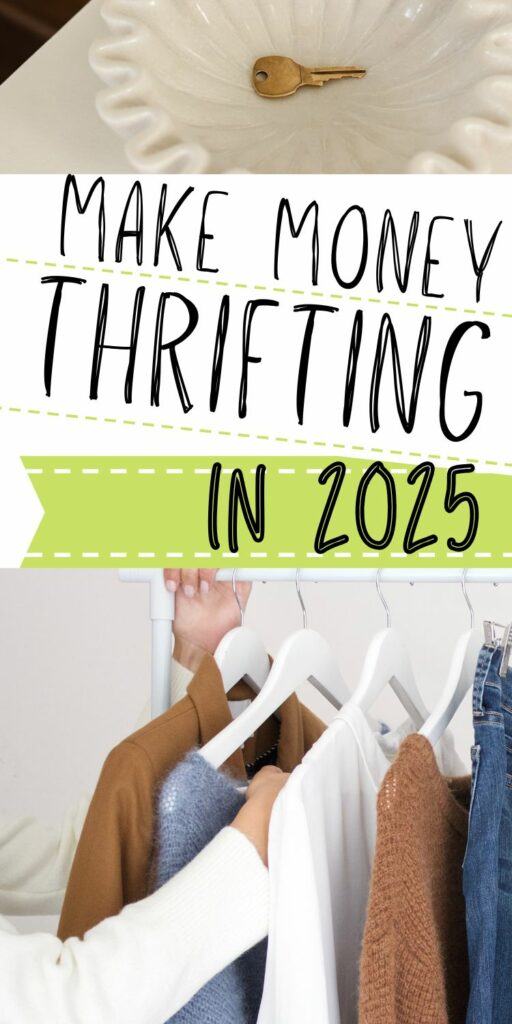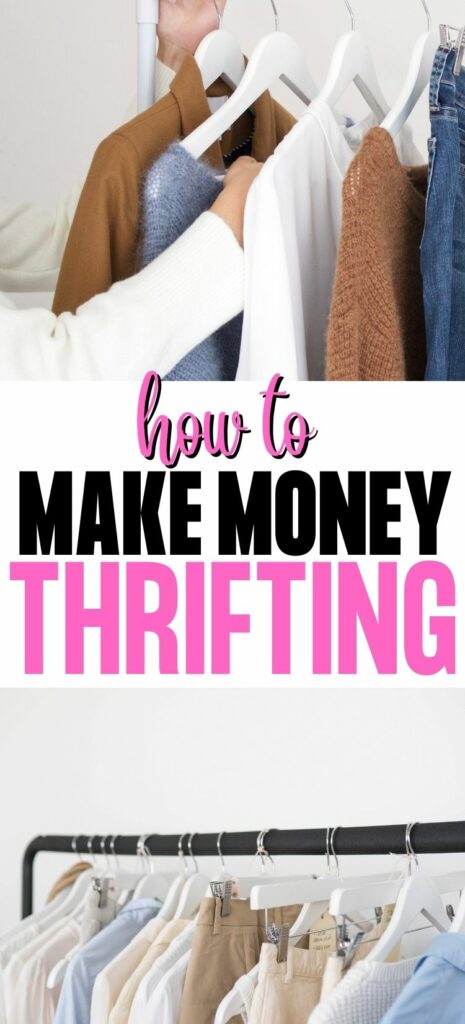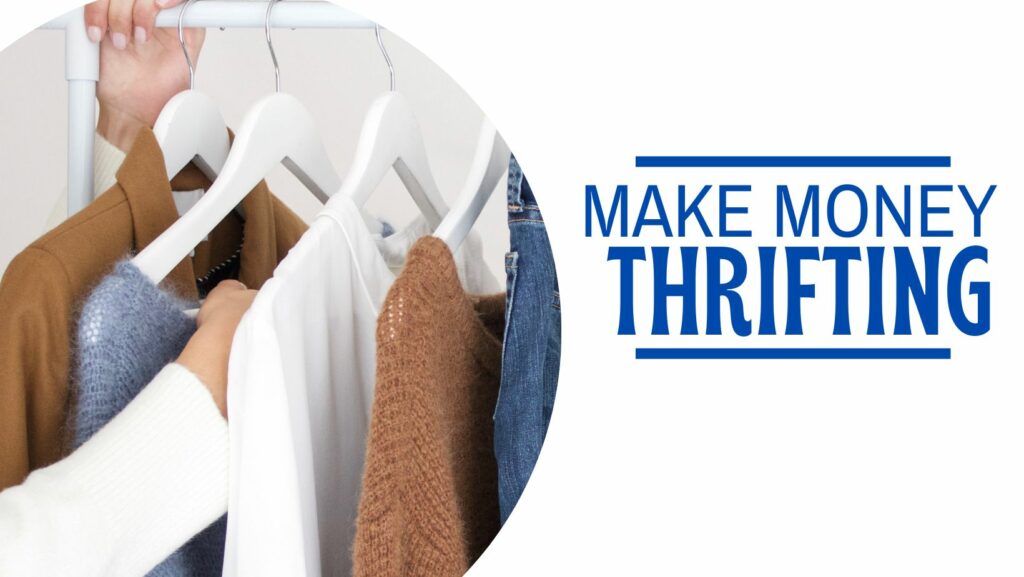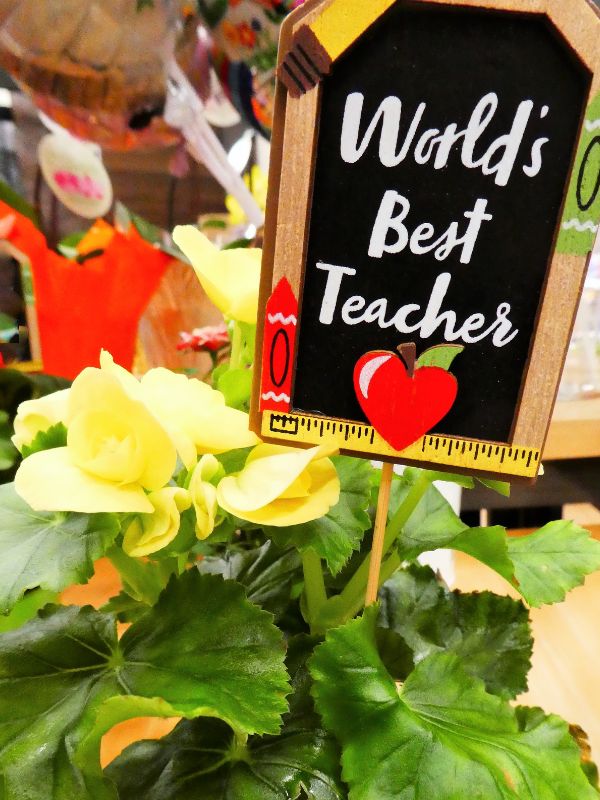How to Make Money Thrifting In 2025
Can you really make money thrifting? Sure, we all know that you can save some cash at your local thrift store but how can you turn your thrift store finds into profit?
You might be surprised to learn that thrifting is a great way to make extra money.
Whether you’re looking to declutter your home or just want to make some extra cash, understanding the basics of how to make money thrifting can be incredibly beneficial.
Thrift stores are a virtual goldmine when it comes to finding high-demand, valuable items at low prices.
You can then turn around and sell these items for a profit.
With the right knowledge and a little bit of effort, anyone can learn how to turn their thrifting finds into cash.
In this article, we will show you the best way to make money thrifting.
You’ll learn:
- The best things to look for in thrift shops
- How to decide which second-hand items are worth buying
- The best places to sell your thrifting treasures
- How to turn your thrift store business into a full-time income
- A free webinar to get you started.

This post may contain affiliate links. Please read my Disclosure for more information
MORE GREAT SIDE HUSTLES
Where To Sell Used Baby Clothes For Cash
How To Sell Pictures Of Your Hands For Cash
What Is Thrifting?
Thrifting is the act of buying items at thrift stores or flea markets and selling them at high prices that net you a profit.
It is also sometimes known as flea market flipping.
You might sell your finds in an online store like eBay or in person depending on what the item is.
There are several benefits to thrifting, including being able to make money from items that would otherwise be thrown away to the obvious environmental impact of recycling items.
Thrifting can also be really fun! Everyone likes finding great deals and when you can sell for a nice profit, it can be a very rewarding experience.
How To Make Money Thrifting
If you want to make good money flipping your thrift store finds, then you need to understand what the most valuable things to find at thrift stores are.
Here are some tips:
1. Research the items you are going to buy
Researching the items you are going to buy can help you make money thrifting by providing valuable information about the item, such as its brand name, style number, and inner fabric care tag.
This allows you to better understand how much profit you could make from reselling it.
By researching items before purchasing them, you can ensure that they will be profitable when resold.
This helps reduce wasted time spent on thrift store runs where you end up with no profit or only pocket change from your efforts.
Additionally, knowing more about an item’s value allows you to make more informed decisions about which items are worth buying in the first place.
Spend some time in your local department store getting familiar with the popular brands for clothing, electronics and purses.
For example, you will want to understand the retail selling price of a Michael Kors purse to be able to understand if a second-hand one has resell value.
The more you understand the products you want to flip, the more money you will make.
2. Look for high-quality items
To make money thrifting successfully, the items you buy need to not look like they came from a thrift store.
Inspect the quality of every item you find. Look for items that are in excellent condition and of high quality, as these will fetch you the highest prices.
Look for thrift stores in higher-end areas, where the wealthy residents donate better brands and furnishings.
Estate sales and town flea markets can also be a goldmine for valuable inventory at low rates.
If possible, visit thrift stores during off hours when there are fewer customers around – this will give you more time to inspect each item thoroughly without feeling rushed or pressured by other shoppers’s requests for assistance or help locating items quickly.
Don’t forget about online purchases. You might be able to find an online thrift store near you than has some great vintage items too.
4. Look for niche markets
Looking for niche markets can help you make money thrifting because it allows you to target high-end areas, estate sales, and town flea markets where valuable inventory can be found at low rates.
By targeting these areas you will be able to find items that are more likely to be in good condition and have a higher resale value than items found at regular thrift stores.
This will enable you to make more profit when reselling the items later on.
Examples of niche markets might be college textbooks or retro game consoles.
Once you have chosen a niche, join Facebook groups of enthusiasts as this can be a great place to meet your target market and source new products.
5. Buy items with a high resale value
It goes without saying that in order to really make money thrifting, you need to buy the right items at the right price.
If you can’t make a profit then your thrifting isn’t worth doing.
Here are some items that are popular with flea market flippers:
Clothing, handbags, and shoes
Look for top brands, popular brands, and luxury brand items in new or good condition.
Know that not every brand that sells for a lot of money at retail will resell for a lot; look at online sold prices for guidance.
Home goods & cookware
Seek out items like vases, dishes, kitchenware, decorations and other home goods that people are willing to pay a high price for.
Look out for items such as Rae Dunn pottery pieces or vintage Pyrex sets/items with lids which are more in demand than common brands like Target or Old Navy products
Toys & games
Look out for vintage toys and dolls(such as My Little Pony or Cabbage Patch Kids), Lisa Frank stationery products, board games and model kits (cars , trains , airplanes) which can command higher prices due to their rarity compared to common toys found at major retailers.
Electronics
Research electronics knowledgeably so you can find rare finds that are underpriced.
Retro video games and consoles are always in demand.
Sports Equipment
Good quality sports gear is a great thing to resell because it is so expensive to buy new.
Many people constantly need new gear for their kids who are outgrowing things fast.
This means that it is easy to find sports equipment in great condition to resell.
6. Inspect items thoroughly
1. Take the time to inspect each item thoroughly before buying it.
Look for any flaws or signs of wear and tear that could affect its value.
2. Check for damage, stains, missing buttons/zippers/etc., and ripped seams or fabric patches that could decrease the item’s quality and value.
3. Examine each garment carefully for any signs of fading or pilling on the fabric due to wear and tear over time; this can make it difficult to sell in good condition later on if you are not careful when purchasing now.
4. Make sure all items are in good working order before purchasing them; broken zippers or buttons will need to be repaired before they can be sold at full price later on down the line if you plan on making money thrifting them later on down the line!
How To Sell Your Thrifted Items
In order to turn a profit, it is important to sell the items you find quickly.
1. Inspect the quality of each item before listing it for sale. Ensure that all items are in good condition and of high quality, as this will maximize their value and help build your reputation as a reliable seller.
2. Price your items according to their condition, age, brand name, rarity factor, and any other factors that could affect their value. Make sure the price is competitive so that buyers are attracted to your listing quickly.
3. Create detailed descriptions for each item listing including details such as size measurements, material composition and any other specifications relevant to potential buyers’ decision making process..
4 . Promote your listings through social media channels , email campaigns , website advertisements etc., in order to reach as many potential buyers as possible .
Where To Sell Thrift Store Finds
Social media
Using social media platforms such as Facebook and Instagram can help you promote and sell your thrifted items.
These websites have a huge number of users, making them ideal platforms for online selling, plus they are free to use!
Make listings on Facebook Marketplace as well as local Facebook groups.
Be prepared to haggle with customers so set your prices according.
Online marketplaces
Online marketplaces allow you to sell items and reach a larger audience.
They typically are free to use or charge fees only if you sell your item.
Some of the best online marketplaces to check out:
- OfferUp – a free to use site that has categories for almost any thing you can imagine.
- eBay – the OG of online marketplaces, this is one of the best places to sell vintage and high value items.
- Etsy – this handmade marketplace is also a great place to sell vintage items.
To be successful selling on online marketplaces:
- List your items for sale on the platform and set a price tag that is competitive compared with similar products in the marketplaces or app you are using.
- Promote your products by creating unique descriptions and including high quality photos of them in order to attract potential buyers who are interested in what you have to offer at competitive prices..
- Monitor customer feedback on a regular basis so that you can adjust your listings accordingly if needed based on customers’ suggestions or comments about specific items .
- When orders start coming through, ship out goods quickly and ensure customer satisfaction through good communication throughout the transaction process
Niche Specific Places To Sell Thrifted Items
If you are niching down then it might help you to check out these lists of places to resell specific items:
Where To Sell Used Baby Clothes For Cash
The Best Places For Selling Old Clothes For Money
How To Start Reselling Shoes For Profit
Tips and tricks for making the most out of your thrift store visits

1. Make a list of items to look for
When visiting a thrift store, you should look for items that are in good condition, have a high resale value, and can be sold quickly. Items to look for include:
– Clothing: Men’s, women’s and children’s clothing in all sizes and styles.
– Accessories: Purses, wallets, belts and other fashion accessories.
– Shoes: Men’s shoes and women’s shoes of all types (dressy or casual).
– Home decor items: Decorative pieces such as vases or frames for decoration or gifting purposes.
– Electronics: Small appliances such as blenders or mixers that are in working condition.
2. Research the value of the items you want to buy
By researching the value of items before purchasing them, you can better understand the resale market and determine what an item is worth.
This will help you make more informed decisions when it comes out to buying items at thrift stores.
By doing research beforehand, you will be able to spot opportunities where an item may be discounted due to its low market value or due to competition from other stores offering similar items at a discount.
This can help increase your profit margin when reselling the item later on.
3. Try to find the items for the lowest price possible
1. Do your research before you shop: Google search the name of the item or a description of it, look up comparables (comps) in Poshmark or eBay, and consider how much you’d like to earn with each flip.
2. Place items on hold if necessary: Ask your store if they can hold items for you for a few hours or overnight while you do more research on them.
3. Think about how to ship items that are large/heavy or fragile: These types of items might take more time/care/money when shipping them out so it’s important to plan ahead for this cost when budgeting your profits from flips!
4. Check the quality of the items before you buy them
1. Inspect the item thoroughly before purchasing it. Look for any signs of wear and tear or flaws in the material.
2. Check for any holes, rips, or stains in the fabric of clothing items.
For household items such as furniture or dishes, look for chipped paint or cracked surfaces that could indicate low quality materials used in production.
3. If you notice any issues with an item’s quality, do not purchase it as it will not be worth selling due to its poor condition and lack of value for money spent on it (eBay fees can add up quickly if you’re selling low quality items).
5. Only buy items that are in good condition
When shopping at a thrift store, you should look for items that are in good condition, of good quality, and have potential resale value. Stay away from anything that’s damaged, been repaired, or looks like it might be fake.
Additionally, consider these additional factors when making your purchase decision:
1. The item’s size and fit
2. The material type and quality
3. Whether there are any stains or other marks on the item
4. If there are any missing buttons or other parts that need to be replaced/repaired before use
5. Any signs of wear and tear on the item (such as loose threads or fraying fabric)
6. Know the difference between resale and thrift stores
Thrift stores and resale stores are both places where you can find items to resell. However, there are some key differences between the two.
Thrift stores generally sell items at higher prices than resale stores, and they may also have different return policies.
Resale stores typically offer lower prices than thrift stores and often have more stringent returns policies or no returns at all.
Additionally, thrift stores usually sell clothing while resale shops tend to focus on furniture or household items that are in better condition.
7. Limit your impulse buying
1. Set a budget beforehand: Decide on a maximum amount that you are willing to spend on thrift store items before leaving the store.
2. Focus on quality, not quantity: Instead of buying as much as possible, focus on finding items that are high quality and will sell well online or in person.
3. Ask questions before purchasing: Questions you should ask yourself before buying include whether an item is in good condition, if it’s something you can resell easily, and if the price is competitive enough for your market area/audience (eBay sellers should check out eBay’s Seller Handbook).
4. Inspect each item carefully before purchase: Make sure to inspect each item thoroughly before making a purchase decision so that there are no surprises later down the line when it comes time to list or sell it!
8. Sell your items quickly and easily
1. Inspect the quality of each item you purchase. Look for items that are in good shape and of high quality, as these will fetch the highest prices.
2. Prepare your items for listing by photographing them in a clean environment with minimal background clutter and good lighting so that they look their best online.
3. Create accurate descriptions for each item including any flaws or damage it may have, as well as its size, color and material composition if applicable (e.g., “black dress”).
4. Set competitive prices based on market research or asking price from the seller if possible; this helps ensure you won’t lose money on an item but still attract buyers quickly since it is priced competitively within its category/region/etc..
5 . List your items on sites such as eBay or Amazon Marketplace using keywords relevant to what you’re selling (e .g., ‘dress’).
This will help increase visibility within search results when someone searches those keywords associated with what you’re selling!
9. Use resale apps or sites to sell your items
Using resale apps and sites can help you make the most out of your thrift store visits by allowing you to find buyers for your items. You can host garage sales, post products on your own website, or sell them on an app.
By using resale apps and sites, you can connect with potential buyers who are looking for specific items and willing to pay a good price for them.
This allows you to maximize the value of your finds while also giving other people the opportunity to buy great items at reasonable prices.
Free Workshop On How to Make Money Thrifting
If you are really serious about making money reselling thrift store items- make sure to attend this FREE workshop.
It is hosted by Rob who is a self-described “flea market flipper”.
In the webinar, Rob will teach you:
- 5 signs flipping/reselling items could be a perfect fit for you.
- 3 insider secrets that will help you grow your flipping profits.
- The best places to find items to flip
- Why flea market flipping is a recession-proof business
- How flipping can set someone free from 9 to 5 job responsibilities and still provide financial security
Sign up for the webinar here
Flea Market Flipping Course
If you want to take your thrifting to the next level, consider taking the course from Flipper University
It is an in depth guide that will teach you how to make money thrifting.
In this online course, you will get:
- 45+ lessons in 13 modules
- PDF downloads for listing worksheets, bonus guides, & more
- Excel spreadsheets for income/expense records
- Video tutorials on what we do for for finding, listing, selling & shipping
The course takes around 14 days to complete.
That means in 2 weeks you can really ramp up your flipping side hustle!
What will you learn in Flipper University?
- Ways to Find Items For FREE
- What Items to Look For
- The ins and outs of pricing and listing an item for eBay
- The basics of shipping small to medium sized items
- How to get your items ready to sell for the highest profit.
- How to use the different platforms – Craigslist, Facebook Marketplace, offerUp and eBay to sell your items
- Accounting, bookkeeping, & taxes.
- Freight shipping large items -boxing, palleting and crating large items.
Plus you will get:
Facebook group for course members – where to ask questions.
One on one coaching available for those interested in earning a full-time income from flea market flipping.
A 30 day money back guarantee if you are not 100% happy with the course
You will also be entitled to these bonuses when you enroll in their course:
- Lifetime Access To Flipper University
- FREE Access To Members Only Coaching Group
- Sourcing Guide: Where to find items to flip
- Buyer’s Guide: The top 100 Items To Flip
- Ultimate Tax Guide
- Shipping 101 Library
- Shoe Flipping Workshop
- Flipper U Cliffs Notes
- Item Listing Worksheet
- Inventory, Income & Expense Spreadsheets
- Quick Start Guide To eBay
- Flipper Success Checklist
- Art of Shipping e-book
- 5 Ways To Find FREE Items To Sell
- Furniture Shipping Workshop (Pro PLUS only)
You can see all the details in the course and the PRO option here
Make Money Thrifting: FAQ
Why is thrifting a great way to make money?
Thrifting is the act of buying items at a thrift store or flea market and then selling them on an online marketplace for a higher price.
By taking advantage of the potential savings in thrift stores and fleas markets, you can potentially make big money by buying items cheaply and selling them for more online.
For example, if you find an item that normally sells for $60 in a thrift store for only $5, you can resell it online for triple its cost and make back your initial investment plus business expenses.
Thrifting can be a simple way to generate extra cash flow if done correctly.
What are the pros and cons of thrift store flipping?
Thrift store flipping can be very profitable, as long as you spend the time to find the right items and list them correctly.
However, thrift store flipping is not a get-rich-quick type of deal.
Thrift store flipping can be time and labor intensive since you have to hustle to find new inventory and set up business processes. It’s not usually passive income.
It requires a lot of work including shopping for items, taking photos/listings/organizing inventory/shipping – which takes up a lot of time and effort.
If you are new to thrift store flipping, it can be difficult knowing what items will sell at what price point or which markets are best suited for them (eBay vs Craigslist vs garage sales). Spending time doing research will help with this.
How should I price my thrifted items?
To work out what price to sell your items for, you will need to research the resale market value of items you’re planning to purchase.
Spend time searching online to keep current on market prices for items you’re selling.
Next, you will need to determine your profit margin:
The selling cost of the item in the online marketplace should be worth more than your operational cost plus any additional fees (such as shipping costs).
What do I need to know before starting a thrifting business?
Before starting a thrifting business, it is important to understand the process involved.
You should have a plan for what days you will shop, how and where you will sell the items and how you will ship them out.
You will need packaging supplies and you might also need to clean and fix up some items before selling.
It is important to research market prices for items you are selling and the timing of discount days at local thrift stores in order to maximize profits.
How can I source inventory for my thrifting business?
Identify thrift stores in your town and nearby area: Start by identifying the thrift stores in your town and nearby areas.
This will help you save time when you go out thrifting, as you won’t have to travel far to find them.
Expand your sources of inventory: As your business grows, it will be wise to expand your sources of inventory by exploring other towns and cities around you.
This will allow you to build a better inventory as there will be more options available than just the local ones.
Don’t forget to check Facebook marketplace and other online groups for bargains too!









